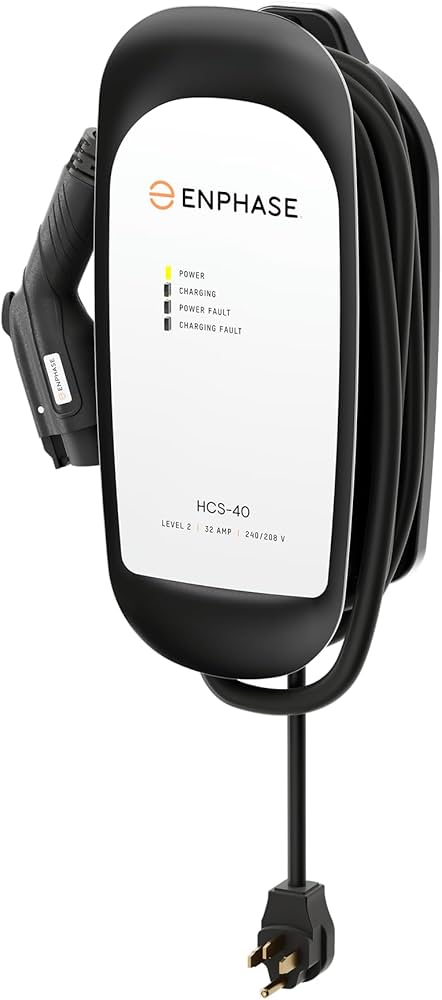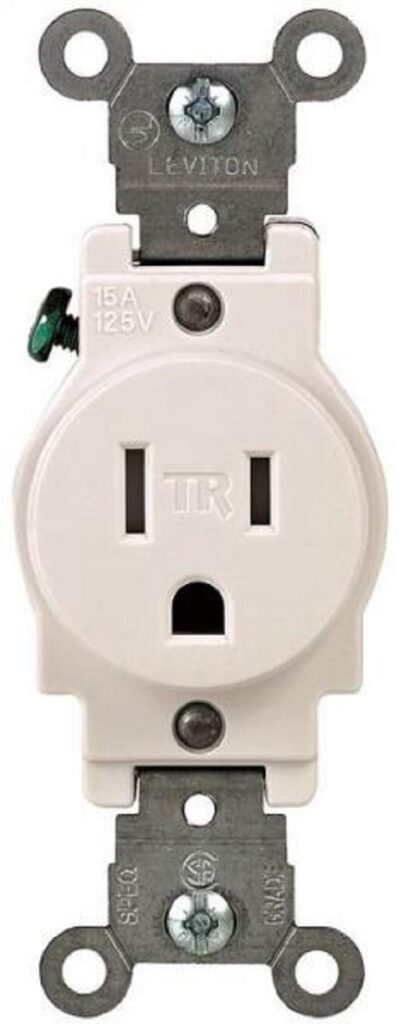

Do you operate a retail business? Looking to raise your profile? Install an EV charging station!
Electric Vehicle (EV) owners tend to have more disposable income than average, so you definitely want to attract them to your business. EV charging sessions on the slow stations shown below typically last an hour or more, so those customers will stick around for a little while. These stations are ideal for restaurants, malls, movie theaters … any place where someone is going to be parked for a while anyway.
The cost of the electricity itself is trivial, at most a dollar per hour while they are plugged in.
So, what are your options? They are listed below, with discussion of the pros and cons of each option, and at the end is a summary table. There is no easy answer to this, as it depends on your budget and how nice of an amenity you want to provide to your customers.
Programs that reduce your out-of-pocket cost
Georgia Power rebate: if you are a Georgia Power customer, they offer a $500 rebate for each Level 2 charging station installed at a business. For a dual-plug station like the Chargepoint CT4000, you could get $1000 back! They started offering this a few years ago, and the offer officially expires at the end of the year, but they keep renewing it every year. Their paperwork is very simple and they turn it around pretty quickly.
Federal tax credit: as part of the Inflation Reduction Act (IRA) legislation that passed into law in 2021, there is a 30% federal tax credit for the purchase and installation of a charging station. For business installations, that credit is capped at $100,000, which is far above what you’ll be spending to put in Level 2 stations.
Georgia tax credit: the state offers a state tax credit for qualifying businesses for 10% of the total cost, or $2,500, whichever is less. The rules for “qualifying business” are quite limiting so this tax credit is actually difficult to get. There is no sunset on this credit until the State government actively stops it.
Charging station hardware options

This is what should be considered the minimum installation: a lower power “Level 2” charging station, with the standard SAE J1772 plug that is compatible with all EVs sold in the US. A good one would be the Clipper Creek LCS series, offered in several models from the LCS-15 to the LCS-30. At 5.8 kW, the top-end LCS-30 gives an EV about 20 miles of range per hour charging. It uses a standard 240 Volt circuit, mounts to the side of a building (or on a pole), and is the cheapest option that doesn’t require the EV owner to bring their own cord. You can try to charge EV owners for using this, but you’ll have to figure out how to do that yourself as there are no automatic payment options with this kind of basic station. This option is really the best if you’re just going to make the charging free anyway.

The next step up would be a higher power Level 2 station, something like the Clipper Creek HCS-40, which also mounts to the side of a building (or on a pole) and costs around $600. With this unit you’ve now stepped up to the most common power level offered by public charging stations — a 40 Amp circuit gets wired to the device from your breaker panel, and provides 6 to 7 kW of charging power to the car. This delivers up to 25 miles of range per hour charging, and is a good match for what most EVs are capable of absorbing. Similar to the above, this is a great solution if you’re going to make the charging station free anyway; these Clipper Creek devices are the workhorses of the industry and very reliable (check out this video of Clipper Creek staff attempting to damage an HCS-40).

ChargePoint stations are the highest-end solution, costing around $6,000/unit. The annual fees range from $200 to $700, and that’s not including the credit card processing fees. Figure $400-$900 / year / unit in additional fees for a ChargePoint system. What you get for all that money is the most advanced network and support in the business, and very reliable hardware. Note: this section is definitely out of date, and needs to be updated with info about their cheaper CPF50 offering, and the annual costs in general.
In 2023, Tesla came out with an interesting solution. They were already selling AC / Level 2 stations like the models above, but with only their proprietary Tesla plug on it. Their new Universal Wall Connector (UWC) product supports both their Tesla plug and the “universal” J1772 plug that all other EVs use, via an adapter built into the station. Tesla then also offers payment support, meaning you can charge people money to use your station, via the Tesla system; you just need to put the station onto your Wifi network, and set up a station account with Tesla. The Tesla network fee structure is remarkably simple and cheap: $0.01 per kWh, subtracted from whatever you decide to charge your customers for the power. For example, if you chose to charge your customers $0.17/kWh, Tesla would take $0.01 of that and give you $0.16. What’s critical here is that there is no monthly minimum fee, so if the station doesn’t actually get used, you don’t pay fees — no other provider offers that.

In theory, you can just offer a regular 120 volt wall outlet on the outside of your building. The EV owner needs to bring his portable cord to use it; all EV owners have one of these cords, because the car comes with it, but they may have left it at home. The charging is VERY slow — about 4 miles of range gained per hour charging. The cost of installation for this is the lowest of all the options — you probably already have an outlet outside somewhere, so you just need to put a small sign on it and then list your location in the national database (see below). Try to keep other heavy loads (refrigerators, heaters, etc.) off of the circuit, so that when the EV plugs in, it doesn’t trip the breaker. This is ideal for workplace charging., and also a decent, modest amenity for hotels to offer. Note: don’t even try to charge money for this service; nobody will pay it and nobody will come.

Most commonly a NEMA 14-50 wall receptacle, this 240 Volt circuit is sized for 50 Amps, which can deliver up to seven times as much power as a regular wall outlet. This is the exact same circuit as you might find for an arc welder or pottery kiln, or in RV parks, and any electrician can install one for as little as $150, depending on how far it is from your breaker panel. An EV owner can then plug into it, HOWEVER they need to bring their own cord, and that kind of cord is much less common. Some Tesla owners got a cord with their car that can use a NEMA 14-50 outlet, but they’re pretty much the only EV owners that have it — nearly all EVs come with a cord that only works with a regular wall outlet. A few EV owners are savvy enough to get a cord capable of using a NEMA 14-50, but it costs THEM between $300 and $1000, so it’s pretty rare that an EV owner has one. All to say, this is a cheap high-power solution that will put you on the map, but it will end up only being useful to a few people.
Where you put the charging spot can make a big difference. If you put it in a high profile position, like right at your business entrance, that’s certainly nice for EV owners but can lead to two problems. First, regular cars will tend to park there, preventing an EV from reaching the charger; this will still happen even if you put up signage reserving the sparking spots for EVs. Second, reserving a spot up front can serve to antagonize regular car owners, who will get annoyed if the parking spot is empty and they aren’t allowed to park in it. If you do reserve a spot, put up a sign saying that it’s for EV charging only, and paint the asphalt green to make it very clear that it’s a special parking spot. Finally, your electrician may find that a location near the entrance will actually be quite far from your building’s power entry (breaker panel), so actually much more expensive to site out front, and you’ll end up wanting to place the stations around the side of the building anyway to reduce the installation cost.
Frankly, it’s fine to locate the station(s) farther away, in an otherwise unused corner of your parking lot. EV owners will happily walk a few extra seconds to be able to plug their car in.
Whether to charge money or not is up to you, however there are a number of things to consider when making your decision.
First, the cost of the electricity (when actively charging a car) is so small as to be negligible. It’s less than $1 per hour, and often much less.
Second, you won’t make your money back strictly on charging fees; a dollar an hour is a typical rate and at that rate it would take you forever to make enough money to pay for the station. Instead, think of the station as an amenity that attracts customers to your business — and encourages them to stick around for a while!
Third, making the station completely free for use means you don’t have to bother with any of the money-charging infrastructure, whether a networked station requiring a membership card, or a keypad mechanism, or credit card reader or whatever. Note that most of those options have ongoing (e.g. monthly) operating costs, and that’s what often kills you.
Fourth, however, if you make it completely free you do have to be ready to watch for people abusing the amenity. Free sites typically develop problems with nearby residents simply parking their EV at the charger for many hours at a time, sometimes overnight. So you do need to be ready for that if you make your charger free. One simple solution is to post a sign saying that charging is free but is limited to an hour or so.
Finally, LIST YOUR CHARGING STATION. Add it to the national database of EV charging stations, because that is how EV owners will find you. The clear leader in this business is www.PlugShare.com , because they have the best web interface, best mobile apps (Apple and Android) and highest quality data. There are also databases run by the network operators (ChargePoint, EVGO, Blink) but they either A) show just their own stations, or B) have sorely outdated information. The US Dept of Energy also runs a database that you should get your station listed in, because if you get it listed there, it will eventually flow downstream to the other databases, including appearing in the car’s mapping systems. But your first step should be to list your new station in Plugshare, and you can take care of that yourself in five minutes. Heck, email me and I’ll take care of it for you.
Below is the summary table; here is what the columns mean:
Power delivered: maximum power (energy flow rate) delivered by charging station; even if a station can deliver more, some cars can only absorb smaller rates, like 3.3 kW, although most can absorb at least 6.6 kW
Hardware cost: for the two cheap options, that’s just the cost of the receptacle parts. 120V outlet assumes existing.
Installation cost: These are wild guesses, and depend heavily on your site. Bolting the charger to the side of a building is much cheaper than pouring a concrete pad and installing a pedestal mount. The electrician’s wiring run (and labor) will be much cheaper if your breaker panel happens to be right next to the charging location rather than on the other side of the building. And of course if your brother is an electrician then this gets a LOT cheaper!
Timeframe: how fast you can get the installation done once you decide to proceed
| EVSE type | Power delivered | Hardware cost | Installation cost | Timeframe | Notes |
|---|---|---|---|---|---|
| 120V wall outlet | 1.44 kW | $0 | $0 | now; just put up a sign and list it | very slow, not very appealing to EV owners |
| 240V wall outlet | up to 9.6 kW | $50 | $150 | a week to schedule an electrician | EV owner must have special cord, most don’t |
| basic Level 2 charger | 5.8 kW | $500 | $700 | a week to schedule an electrician | good entry point, compact |
| higher power Level 2 charger | 7.2 kW | $600 | $700 | a week to schedule an electrician | great entry point, powerful |
| ChargePoint Level 2 charger | 7.2 kW | $7200 for dual | $3000 | several weeks for install and commissioning | note $3600 per plug |